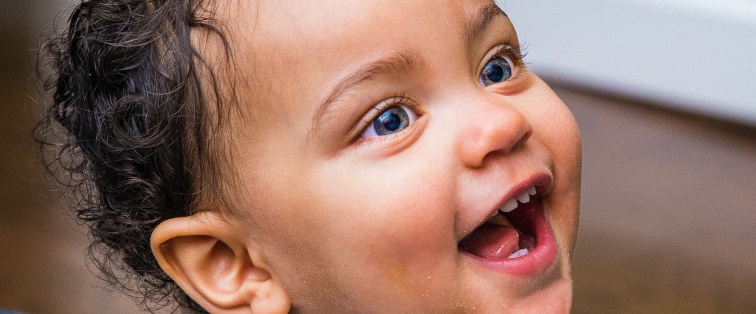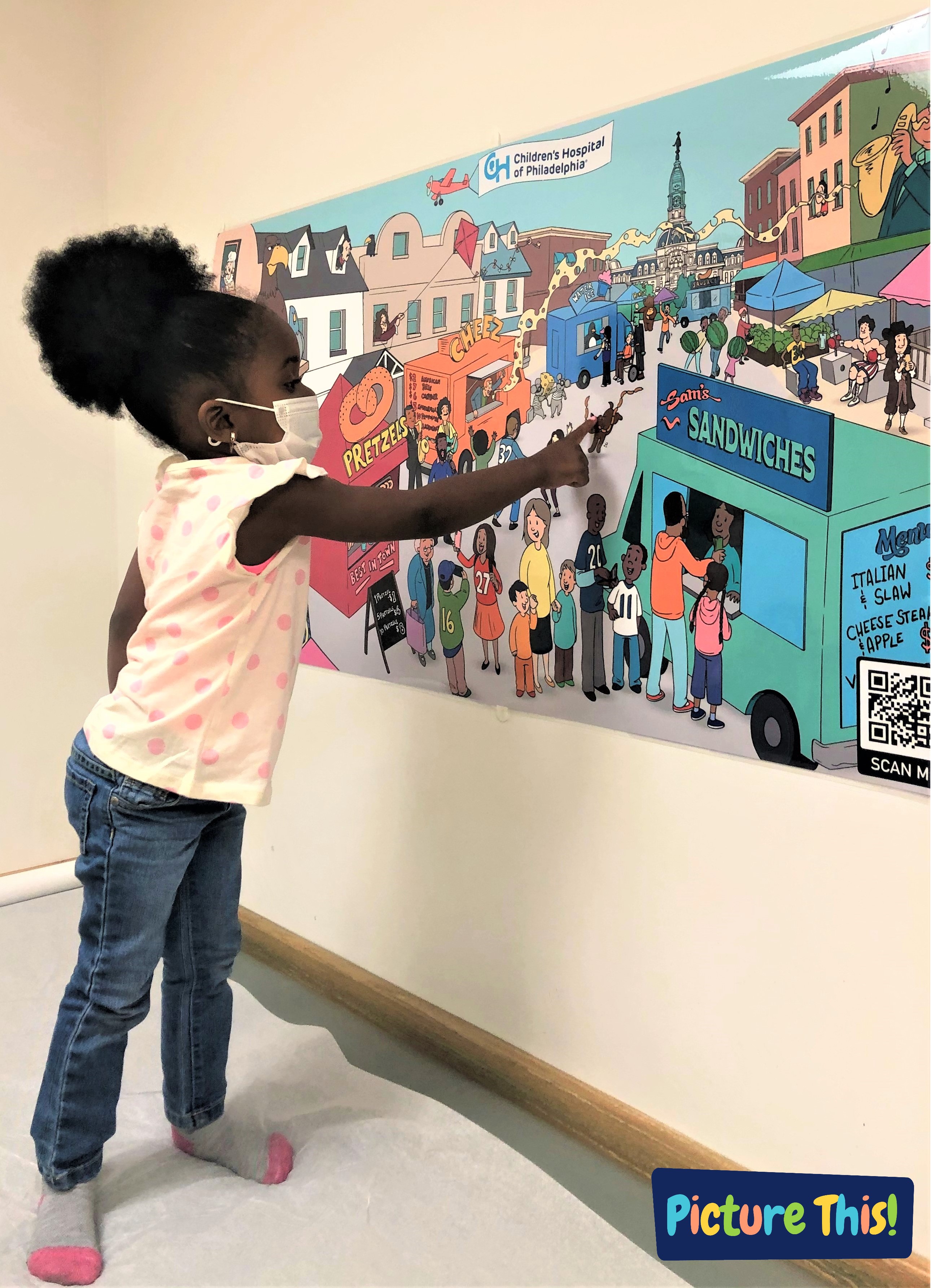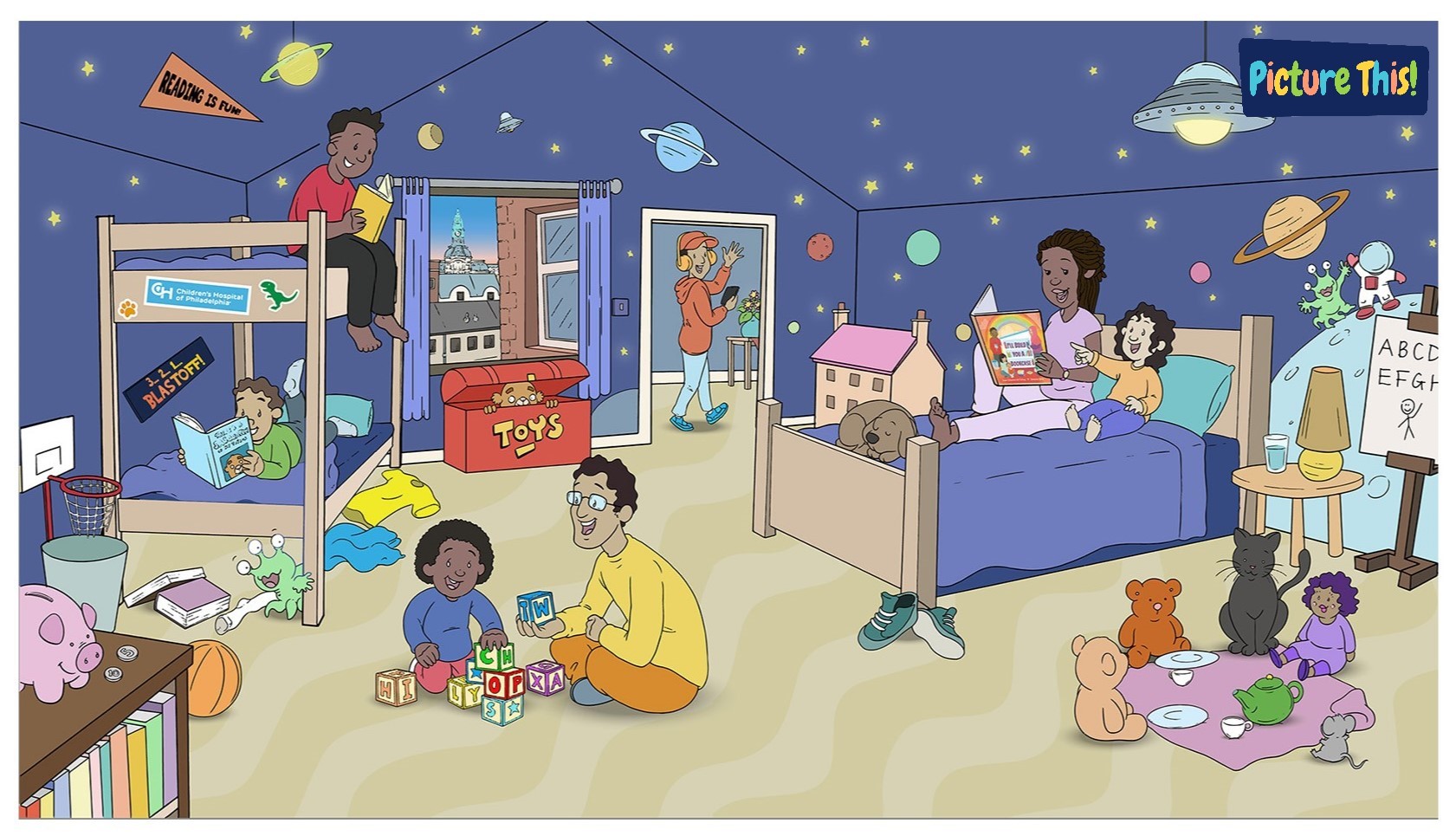Picture This!: Exam Rooms as Examples of Ways to Integrate Play…Everywhere!

Walking into my (Danielle) clinical office, three exam rooms sit ready, filled with families each waiting to be seen. The day starts with a 10-year-old, deeply absorbed in her tablet as I walk into the room. The visit echoes with her mom, increasingly irritated, asking her to “pay attention to the doctor.” A few minutes later, I’m greeted by the wailing cries of a 15-month-old, bored in the room next door as her mom tries to console her with the endless refrains of a “Wheels on the Bus” YouTube video. We wrestle through the visit, as the newly minted toddler, tired and restless, tries to make his way to the door. Next up, a 4-year-old, full of energy, splashes in the exam room sink as mom looks at her own phone, short on patience from the time spent waiting with few options to amuse her preschooler. The child, while easily redirected by the book I offer at the start of the visit, is damp, but happy. The morning plays scenes like these on repeat every 15 minutes. Sound familiar?
For the last four years, moments like these led our multi-disciplinary team to ask the question: can we model an everyday experience, like waiting for your doctor in the exam room, as an opportunity to facilitate the types of interactions that calm children and help them thrive?
Here’s what we know:
- Play decreases stress and promotes early learning. In fact, nearly three years ago, the American Academy of Pediatrics (AAP) supported play as a way to reduce child stress, build relationships and foster learning in young children.
- Visual art, like storybook pages, can be used as a tool to create conversations. Visual installations also allow engagement in a way that complies with infection-control measures necessary in medical waiting spaces.
- In accordance with CDC recommendations, medical waiting rooms are often sparsely used in the wake of the COVID-19 pandemic. By shifting family wait times to a more sterile exam room, providers leave families with few ways to decrease anxiety levels associated with an already stressful process.
With a goal to reimagine medical waiting spaces as a model for playful learning, and through an investment by the William Penn Foundation (WPF), Picture This! was born. Since 2016, our multi-disciplinary team of design experts, administrators, child life specialists, researchers and pediatricians has brought colorful, interactive storybook-page murals (like the ones below) into waiting spaces. These murals model creative educational engagement, build imagination, serve as an assessment tool and improve patient-family experience. Each mural has an associated set of prompts, written by pediatric experts alongside parents and caregivers, to help guide a family’s interaction with the images. These developmentally focused prompts are available through a web-based portal accessed through a QR code on the mural, and include multiple question types, like a seek and find exercise and story starters to get families talking.


These prompt styles are rooted in a framework used by wordless picture books, which have been shown to increase shared reading conversation between a caregiver and a child. In pilot research of Picture This! (also supported by WPF) we observed nearly 100 families across Children’s Hospital of Philadelphia (CHOP) as they waited for visits in three spaces: a waiting space with an 8 x 9 foot Picture This! mural, a standard medical waiting space without a play area, and a medical waiting space with a play area that encouraged active, physical play.
Our team’s observations showed that the mural created conversations significantly more often than the other medical spaces, even those that had play features installed. Families simply talked more when the murals where present, and even more importantly, the conversations that happened around our murals were longer, and included more conversational turns and richer language that impacts a child’s learning.
In addition to creating opportunities for engagement and conversation, the murals are also designed to work seamlessly in the exam room with programs like Reach Out and Read, serving as a clinical tool that can calm patients who may be anxious or fearful, engage patients who may be displaying challenging behaviors and understand patient’s skills as developmental milestones are assessed. Interviews with clinical staff about the murals have been encouraging, with clinical staff and pediatric care providers alike utilizing the murals as part of their care.
Indeed, as I (Danielle) move through my clinical day, I’m thinking of opportunities to expand Picture This! to each provider and family in the region, arming them with the ability to model playful learning while patients wait, and providing a tool to refocus the tech-absorbed tween, calm the anxious, tired toddler and redirect the active preschooler. Our team encourages families to engage with the spaces around them, creating opportunities for imagination in ordinary places, like the medical exam room. We also welcome collaboration in this work, as we collectively dream of more playful clinic spaces across our community and beyond.
Melanie Hoynoski, CCLS, CTRS, is a child life specialist at CHOP.
Steve Wilmot, MSW, is the senior director of practice management services in CHOP’s Care Network
If you’re interested in collaborating on Picture This!, contact Dr. Danielle Erkoboni at erkobonid@chop.edu.

